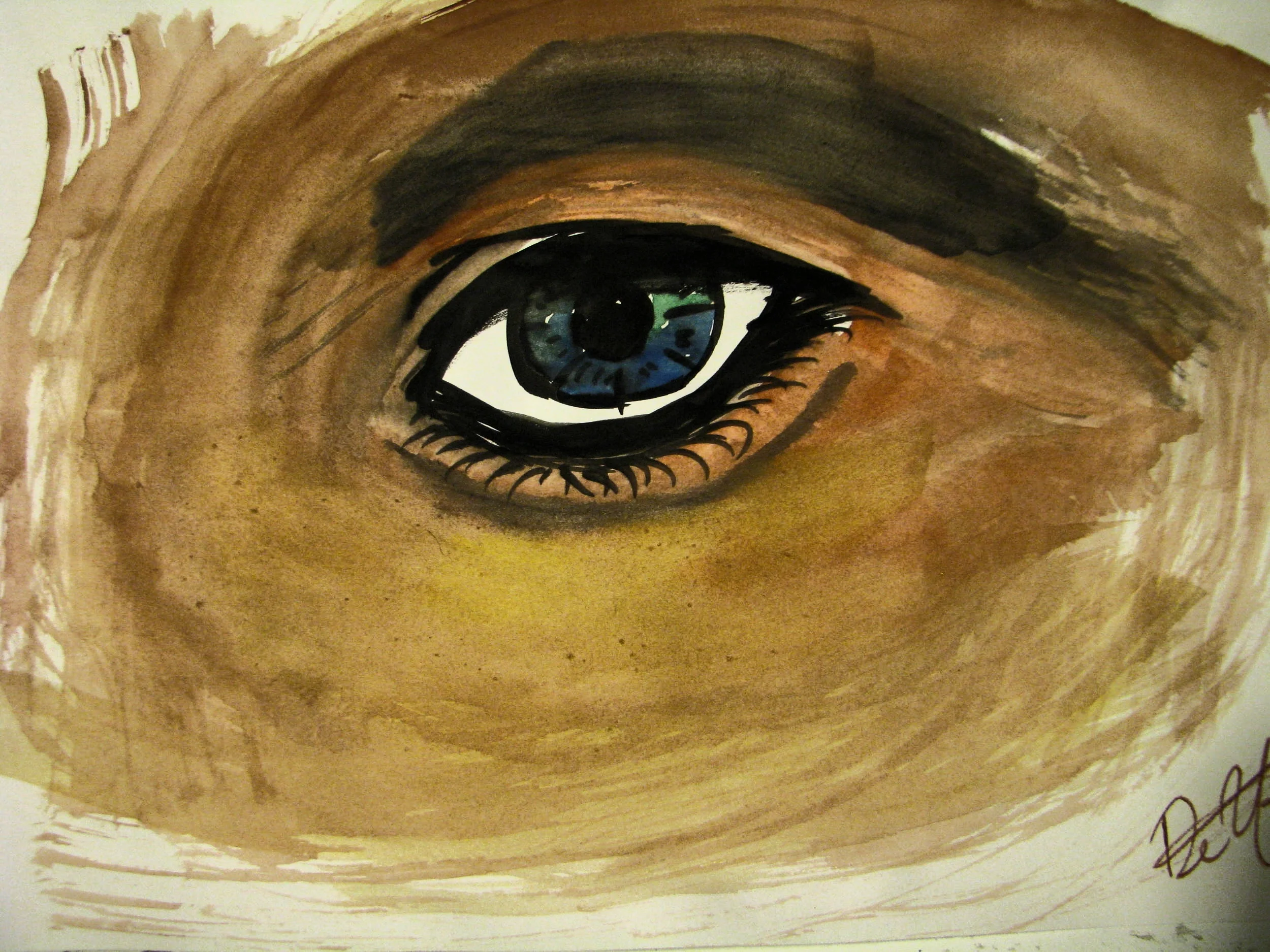Name of Project: Two-week watercolor workshop
Grade Level or Age of Participant: Young Adults: 18-25
Organization and Coordinator: Kulture Klub (Youthlink), Director Crystal Brinkman
Teaching Artist: Jonathan Herrera
Overview of Project
The watercolor workshop extends over a two weeks, meeting once a week every Thursday. Students will create watercolor compositions both weeks about personal experiences that have molded them to be the person they are today. This project can be described as making self-portraits without figuratively depicting ourselves. Each session will start with warm up exercises and lead into a 1-hour investment into a single piece.
“Big Ideas”/ Essential QUESTION(s)
Through these workshops students will be able to explore their own histories and be able to relate to other participants that speak about similar issues. Students will be able to further understand large systems of oppressive forces that plague specific communities in the US by comparing each other’s stories.
Student Outcome Objectives
Students will:
1. Understand the biographical and personal in art, specifically in painting
2. Apply expressive techniques of painting with watercolors
3. Create unique work that tells a personal narrative
Prior Knowledge
No formal experience is required before participating in the workshops.
Lesson Preparation Timeline
Speak with coordinator of Kulture Klub and figure what the students would like to experiment with. Gather watercolor materials and paper for workshop. Installation of work collected after the workshop. Gallery reception to be held in Kulture Klub’s gallery space.
Examples of Artwork
Examples of simple watercolor compositions and explorations. Printed example artwork will also include painters outside the medium to highlight the importance of the narrative with this specific project. 5-6 prints. Each print will include the picture of the artist on one side of the page, and an example of artwork on the other. Some examples include:
Julie Mehretu, Jacob Lawrence, Pope.L – Paintings
Assessment
Pick up artwork at the end of each session (two)—including the brainstorming and sketching exercises. The director and the teaching artist will choose a one or two of each participants work for the gallery installation the following week. Immediate feedback will be given as a group during the last 5-10 minutes of each workshop.
Materials
Watercolor sets
Brushes
Paper—both cheap and quality for final
Roll of artist tape
Pencils w/ erasers
Plastic cups for water
Paper towels (white) to test and take excess water from brushes
5-6 prints of artwork as examples
Learning Activities and Timing
Week 1
1. Intro presentation of overview of project (timeline, etc.) – 5 minutes
2. Look at examples of artists who deal with the narrative. Invite the students to look at and respond to the work by asking: What do you notice about this work? What makes you say that? What else to you notice? No right or wrong answers.
3. Take 15-20 minutes to sketch, brainstorm, and experiment with materials. During this time there will be music playing and the students will be able to share and help one another.
4. Take the remainder of the workshop to invest time into a single piece of quality mixed-media paper (this can also be a concrete series).
5. Take the last 5 to discuss as a group about the work and the experience.
6. Clean up
Week 2
1. Students who return to the workshop the following week can move straight onto quality paper and skip the drafting and experimenting of material. They can also work on experimenting and non-prompt work after finishing a couple of pieces that deal with the lesson.
Teaching Artist Reflection
Some problems I anticipate is frustration within students to not participate because of what they think watercolor should or shouldn’t look like.
Some of the things I am thinking about as I consider this project more carefully – opportunity to teach WC techniques and tricks (wet on wet, wet on dry, wash, salt) (art is learned), allowing the technique to lead rather than trying forcing the WC to do what is unnatural, acknowledgement and adaption of happy accident, inclusion of text, consideration of scale, color and texture and emotion. Making the shapes larger enough to paint but so large they are hard to control.













